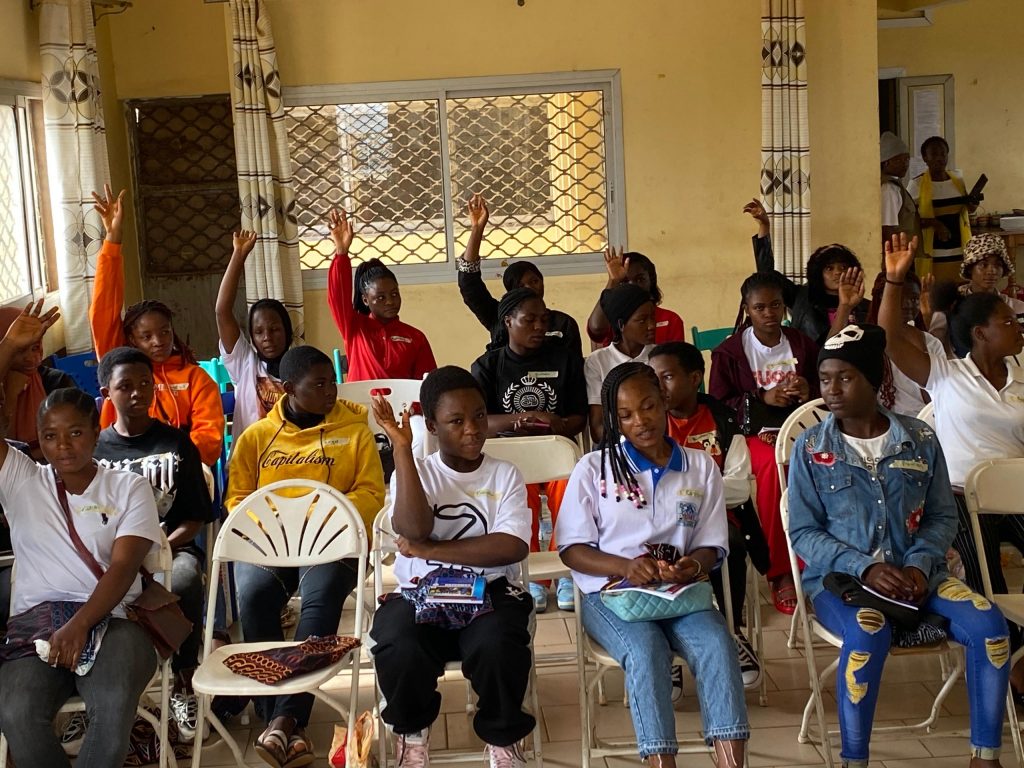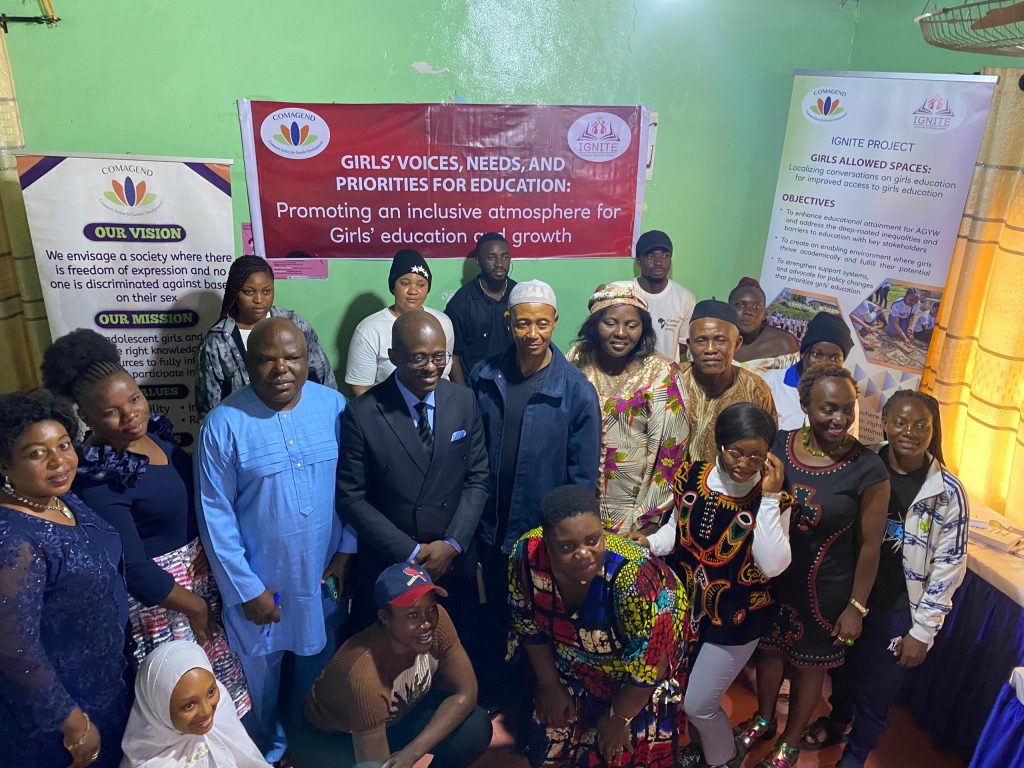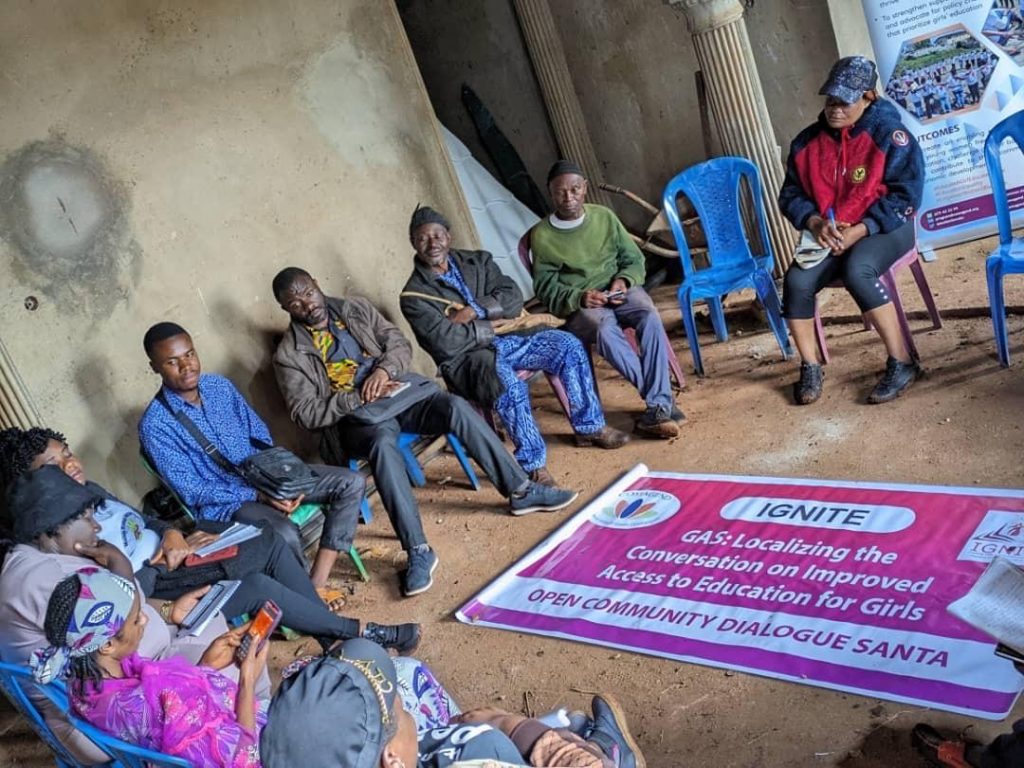From time immemorial, girl education has been a call for concern as parents have believed in the cultural roots to educating boys more than girls. In the African patriarchal society, it is believed that a boy’s education is more important than that of a girl while others hold that “sending a girl to school is investing for another family as she is expected to get married”. Now, there is a change as both genders go to school, but parents send them to school just for the sake of fulfilling their obligations. From a survey and a key informant interview carried out in the three communities, the statistics revealed that 44% of parents are educating their daughters because it’s their obligation to do so while 40% belief that girls are worth investing in. 7% of respondents believe that “a little” education is enough to prepare their daughters for marriage. Girls have begun attaining education, but they still face challenges just like Jean Jacque Rousseau said, “man is born free but everywhere he is in chains”. In schools’ girls face several challenges amongst which is Gender-based violence, lack or inefficient gender-friendly infrastructures and material, sexual harassment amongst others

GBV remains a pressing issue in many regions, especially the Northwest of Cameroon and the anglophone crisis that has fuel it, as economic dependency and a lack of resources exacerbate the vulnerability of girls and young women. This report examines the multifaceted challenges that hinder the educational attainment of adolescent girls and young women (AGYW) in the subdivisions of Mankon, Tubah, and Santa, highlighting the socio-cultural factors at play and proposing actionable solutions.
From August 2024, Inspiring Girls and Grassroots Network for Inclusive and Transformative Education (IGNITE) in collaboration with Common Action for Gender Development (COMAGEND) have been implementing the Girls Aloud Spaces project in Mankon, Santa and Tubah within the North West Region of Cameroon. To improve the educational attainment of girls in the community, COMAGEND in collaboration with IGNITE ensured that advocacy on girls’ educational attainment and safe educational environment should be achieved in these communities and beyond. To achieve this, we carried out a survey, a key informant interviews in the communities to find out their perception on girls education, factors that hinder their education and challenges faced. Thereafter, we equipped 45girls on their educational rights and advocacy strategy to advocate for their peers, girls were selected from the three communities to advocate for and sensitize their peers in different girl spaces where issues of sexual reproductive health right in schools and relationships with their teachers are discussed confidently. Within these spaces, the girl advocate collection data on girls perception of educations, the believes of their parents about their education, their career choices/orientation, reasons why some of their peers have dropped out or why do they think they might drop out of school, and above all the challenges they face so as to evaluate if theirs rights are being respected. These Girl Spaces have been able to directly reach 2924 female between the ages of 10-35 and 360 male within the same age group. Moving forward, we are currently producing an advocacy documentary film on girl educational promotion.

Community Perceptions of Educating Girls Identifying these problems in the community and beyond, we engaged community members in the communities to find out their perception of girl’s education. We observed that girls’ education is heavily influenced by traditional cultural norms and gender roles by 41.26%. Families often prioritize boys for educational opportunities, viewing them as future breadwinners. This bias is compounded by economic considerations, where limited resources lead parents to invest in their sons’ education, believing that girls should take on domestic responsibilities in preparation for their marriage. 25% of the survey recorded that early marriage and childbearing further diminish the perceived value of girls’ education, especially for those in the 10-14 age group, as families often withdraw them from school to prepare for marriage.

Safety concerns also play a significant role in shaping these perceptions. With the ongoing crisis in the region, 23.08% of parents are increasingly hesitant to send their daughters to school for fear of sexual and physical harassment or violence in school and out of school. However, there is a glimmer of hope; our project is changing attitudes among community members and local initiatives promoting girls’ education are slowly transforming these perceptions. Advocacy efforts are beginning to show that educated women can contribute meaningfully to household income and community development.
Reasons for School Dropout
Moreover, having a knowledge of these perceptions the survey equally set to find out the reasons for girls dropping out of school. Economic constraints (poverty) were highlighted during the survey at 39%, as families often struggle to cover the costs associated with education, such as school fees, feeding, transportation and other maintenance costs. As a result, parents prioritize spending on boys’ education, reinforcing the cycle of gender inequality. Equally, early marriage and pregnancy pose substantial barriers, particularly for girls between the age group of 15-19, as cultural/societal norms dictate that they should marry young, often leading to their withdrawal or forfeiting from school. The survey highlighted a 35% forfeit.

Furthermore, poor quality education in rural areas further aggravates the issue. Many schools lack essential resources, trained teachers, and facilities conducive for effective learning and it has become more due to the crisis in the region. Due to the crisis, the distance of a functional school is too far hence discouraging parents from sending their children to school. Another side to the situation is that of children living with a disability, parents prefer leaving them at home, hence lack of inclusivity adds to the reason for girls drop out by 17.13%. These dissuades parents from investing in their daughters’ schooling.

Cultural norms and gender roles also play a significant role in girls drop out; girls frequently find themselves tasked with household chores, detracting from their study time. Family dynamics further complicate this issue, female children are often betrothed to men when they are born while extended relatives may exert pressure on parents to prioritize traditional roles over formal education for females. Also, social isolation can lead to a lack of motivation for girls, particularly those aged 20-35, when they feel unsupported by their schools.
Challenges in Accessing Education
Girls in Mankon, Tubah, and Santa face numerous challenges in accessing and completing their education. Socio-cultural barriers significantly impact girls’ educational opportunities, with traditional gender roles often favoring boys. Economic constraints further limit girls’ access to education, as financial hardships lead families to prioritize boys’ education. Infrastructural challenges, such as the distance to schools and inadequate facilities, make it difficult for girls to attend school safely such as gender unfriendly toilets without sanitary dignity kits. Limited support systems, including mentorship programs and community initiatives, exacerbate these challenges, as many girls lack role models who can inspire them to pursue education. Moreover, gaps in policy implementation hinder efforts to promote gender equality in education, as local execution of national policies is often inconsistent. The educational landscape for girls in the Northwest region of Cameroon is filled with a lot of challenges, yet there are opportunities for positive change.
By addressing the socio-cultural, economic, and infrastructural barriers that hinder girls’ education, stakeholders can create an enabling environment where girls can thrive academically. Engaging community leaders, parents, and girls themselves, particularly those in the key age groups of 10-14, 15-19, and 20-35 in dialogue and awareness campaigns is crucial. Promoting gender-responsive teaching methods, strengthening support systems, and advocating for policy changes will not only enhance educational access for girls but also empower them to fulfill their potential in a more equitable society.


